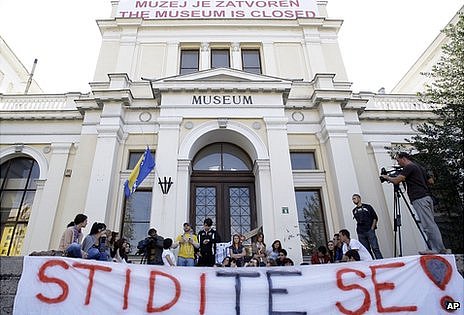Bosnia’s National Museum, which survived two world wars and the 1990s siege of Sarajevo, has closed because of lack of funds and political splits.

The museum dates back to 1888, when Bosnia-Hercegovina was part of the Austro-Hungarian Empire.
Staff have not been paid for about a year. They and hundreds of students protested over the closure on Thursday.
Bosnia’s divided ethnic groups have failed to agree on cultural funding since the war ended in 1995.
The National Museum’s exhibits include the Sarajevo Haggadah, an illuminated manuscript brought to Bosnia by a Jewish family expelled from Spain during the Inquisition and saved from Hitler’s forces during World War II.
For years the museum and six other cultural institutions – guardians of Bosnia’s national heritage – have struggled to survive with ad hoc grants from different branches of government.
“Such a complex institution cannot function by improvisations. The authorities must provide the funds for employees’ salaries and functioning costs,” said National Museum manager Adnan Busuladzic.
He said the museum needed about 60,000 euros a month (£48,000; $78,000) for its regular activities and events.
Bosnia-Hercegovina has no central culture ministry. The country is divided into the Bosniak-Croat Federation and the Bosnian Serb Republic (Republika Srpska).





